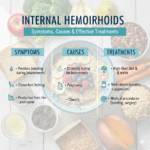5 Easy Tips for Better Pacing to Help You Effectively Manage Your Back Pain
Pacing is spacing. That means spacing out our activities throughout the day or days to balance them and avoid things either overdoing or under doing. Many people do a lot of physical activity on a good day while complete rest on a bad day. This results in either overdoing and under doing which keeps the body imbalanced. A habit or a plan to eliminate this irregularity and keep the body balance, we need to space out all our physical activities. In other words we need pacing.
 People often find that pacing is restricting their everyday life or activities. But in reality it is not. Those who think that pacing is restricting yourself do not understand the whole concept. This is so because Pacing is a skill and self-help. You need to learn the skill.
People often find that pacing is restricting their everyday life or activities. But in reality it is not. Those who think that pacing is restricting yourself do not understand the whole concept. This is so because Pacing is a skill and self-help. You need to learn the skill.
In the beginning one may find it somewhat restricting, but once you are used to it, it helps a lot to manage one’s life style despite having pain. In other words, like any other skill, you may find it a little bit difficult in the beginning, but once you keep practising, you will soon mast the art and reap its benefits.
According the Bradford Teaching Hospitals NHS Foundation Trust’s physiotherapy leaflet:
“Pacing means to do a lot on a good day while doing nothing, but taking rest on a bad day.” Our bodies prefer a balance between rest and exercise on a daily basis, and pacing means doing a similar amount of activity each day despite pain.”
So, neither be overactive nor be underactive.

Over and Under May Flare up the Pain, Pace Yourself Better
You may over do on a good day thinking that not doing them on a bad day will avoid the flare up. But, this overdoing may actually increase the pain in the evening (if not outright in the morning on a good day). The flares up may continue for a couple of days or weeks.
The next couple of days you may have to take a complete rest and and wait for things to settle down. This will again contribute to more pain as the muscle and joints become stiff due to inactivity. So, in reality, both the activities cause you more pain and doing less. Whether you are an under pacer or over pacer, you are not doing any good to promote healing and well-being throughout your body systems. The way out is to pace yourself better.
But How to pace yourself better?
It takes time to learn any skill and even more time to perfect it. Like any other skill, pacing, too, takes time to learn it and perfect it. The skill is to increase your activity, but reduce your pain level. As every skill is learnt bit by bit, so is pacing. An example is if you are preparing for a marathon race, it will be unwise to run 20 miles the first day.
Common sense will tell you to start with a short distance and slow pace and increase it gradually overtime. Keep it up and when the time for the marathon arrives, you shall be ready for it. Simply, none should run before walking.
A practical example of pacing would be gardening, washing, cleaning or something similar. If you do it for an hour time, do it 15 minutes or 30 minutes (which ever you are comfortable with) then take a break and then return to it. This way you increase your activity and decrease your pain.
5 Tips to Pace Effectively
Therapy Services Review, August 2011, advises the following tips to help you pace effectively.

1. Identify time limits
. Be realistic. A 30 minute walk on a good day while a 10 minute on a bad day is over and under doing respectively. It is realistic to take 15 minutes every day. You can also pace it by taking more rest breaks on bad days. Start small and as your body becomes fitter, increase your walk distance and time.
2. Beware of barriers
These are the things which may stop you from pacing effectively. For example, unexpected emergencies or planned things like the arrival of a new grand child or even a holiday. If you are unable to do them in one time during such barriers, divide them into bits. If your activity is 45 minutes, it is a good step to divide it into 3 bits but not to leave it altogether.
3. Prioritise
It is very important to do those things first which are important. If you don’t prioritise, there is a danger of overdoing things when you have to do something which is more important.
4. Use Timer or Stopwatch
Avoid using pain as your guide. Don’t overdo it for 5 minutes even if you feel good. Perseverance yields positive results.
5. A management technique
Think of it as managing pain which is a part of your condition. The purpose of your pacing is to get back to life. Think of the achievement to keep you motivated.
Pacing is an effective way of managing pain and doing more in an organized and planned manner. It is the way to to reduce your pain and do more by properly spacing out your activities. Pacing is not only helpful in managing back pain, but also helps in several other conditions.


 7 Worst and Deadly Back Pain Mistakes to Avoid
7 Worst and Deadly Back Pain Mistakes to Avoid 9 Ways to Avoid Set Backs Successfully During Pain Flare Ups
9 Ways to Avoid Set Backs Successfully During Pain Flare Ups Do it Everywhere Relaxation Techniques to Ease Back Pain
Do it Everywhere Relaxation Techniques to Ease Back Pain





Leave a Reply